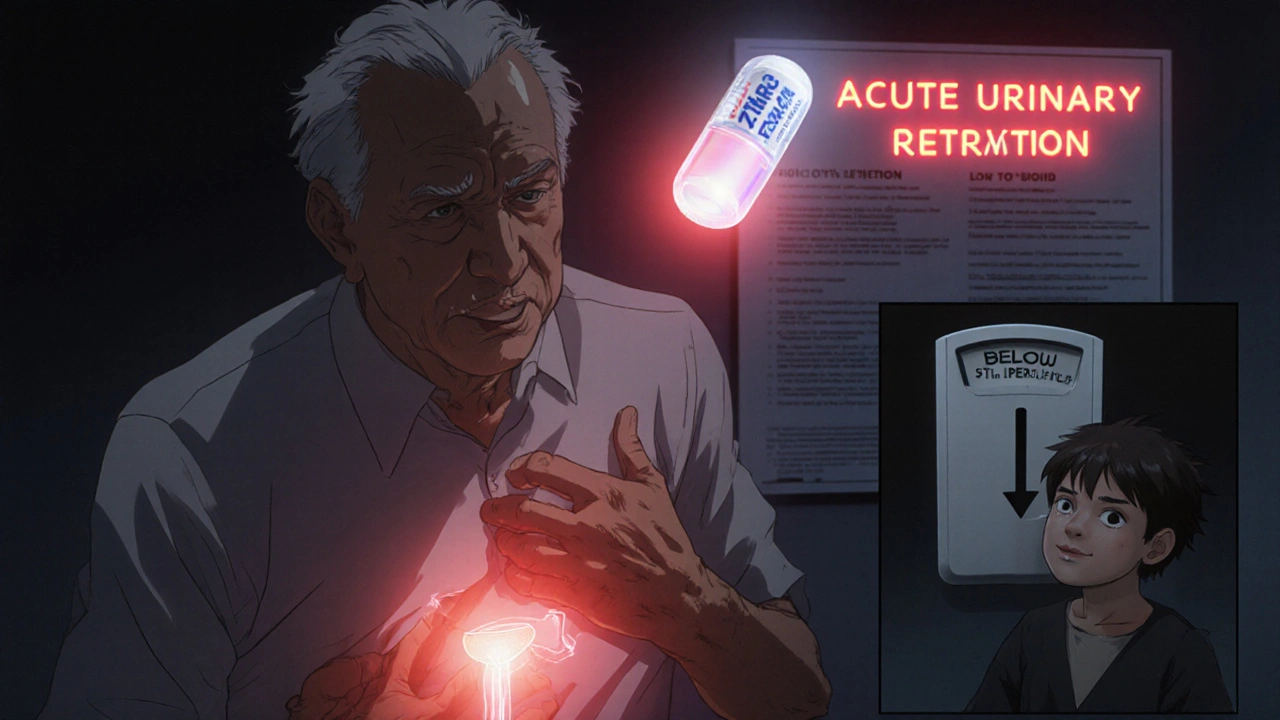The U.S. Food and Drug Administration (FDA) issued more than 60 drug safety communications in 2024 - and 2025 is shaping up to be even busier. If you or someone you know takes prescription medication, these updates aren’t just bureaucratic noise. They’re life-saving alerts that can change how drugs are used, prescribed, and monitored. From opioids to Alzheimer’s treatments, the FDA is acting faster and with more detail than ever before. Here’s what actually changed in the last six months - and what you need to do about it.
Opioid Prescribing Just Got a Lot More Transparent
On July 31, 2025, the FDA updated the labeling for all 46 approved opioid pain medications in the U.S. This wasn’t a minor tweak. It was a class-wide overhaul based on two large postmarketing studies that tracked over 100,000 patients. The key takeaway? Opioids carry a 1 in 12 risk of developing opioid use disorder if taken for more than 90 days. That’s not a guess. It’s a number pulled from real-world data, not clinical trials.
Before this update, doctors had vague warnings like “risk of addiction.” Now, they’re required to tell patients: “If you take this for longer than three months, about 8% to 10% of people will develop dependence.” That’s a game-changer in patient conversations. It also means doctors must now reassess opioid use every 3 months for stable patients - and every 1 to 4 weeks when starting treatment.
But it’s not just about addiction. The new labels now include warnings about toxic leukoencephalopathy - a rare but serious brain injury linked to opioid overdose - and interactions with gabapentinoids like Neurontin and Lyrica. These drugs, often prescribed together for pain, can dangerously slow breathing when combined with opioids. The FDA also added new warnings about opioid-induced esophageal dysfunction, a condition that can cause severe swallowing problems.
Doctors are split. Some say this is the most important update since the 2016 CDC guidelines. Others worry it will push chronic pain patients off medications they rely on without offering better alternatives. A survey by the American Medical Association found 63% of primary care doctors feel they don’t have enough time in appointments to explain these risks properly.
ADHD Medications and Weight Loss in Young Kids
On June 30, 2025, the FDA issued a safety alert about extended-release stimulants used for ADHD - including medications like Adderall XR, Vyvanse, and Concerta. The issue? Significant weight loss in children under 6 years old.
While appetite suppression is a known side effect, new data showed that some toddlers lost more than 10% of their body weight within 6 months of starting treatment. The FDA now requires doctors to measure weight at the start of treatment and every 3 months after. If a child drops below the 5th percentile for weight, the drug should be reconsidered.
This affects about 9.4 million U.S. children diagnosed with ADHD. Parents of young kids on these meds should ask their pediatrician: “Have you checked my child’s weight recently? Are we tracking growth?” It’s not about stopping treatment - it’s about catching problems early before growth is permanently affected.
Leqembi and the New MRI Rule for Alzheimer’s Patients
On August 28, 2025, the FDA made a groundbreaking move for Alzheimer’s treatment. Patients taking Leqembi (lecanemab) must now get two MRIs - one at 5 months and another at 14 months after starting treatment. Why? Because of amyloid-related imaging abnormalities, or ARIA.
ARIA isn’t a stroke. It’s swelling or small bleeds in the brain caused by the drug removing amyloid plaques. In clinical trials, about 1 in 5 patients showed signs of ARIA on MRI. Most had no symptoms, but 1 in 100 developed serious brain swelling or bleeding. The FDA now says: “If you’re taking Leqembi, we need to see your brain scans - no exceptions.”
This is the first time the FDA has mandated routine brain imaging for a drug used in a chronic neurodegenerative disease. It’s expensive. It’s inconvenient. But for a drug that costs $26,500 a year, the risk of missing ARIA is too high. Doctors are now required to explain this before prescribing.
Weight Loss Drugs and the Hidden Risk of Gut Blockage
While not a formal recall, the FDA issued a safety communication in June 2025 about GLP-1 weight loss drugs like Ozempic, Wegovy, and Mounjaro. The issue? Delayed gastric emptying. While this helps with appetite control, it can also cause severe nausea, vomiting, and - in rare cases - intestinal blockage.
There were 17 confirmed cases of bowel obstruction in patients using these drugs, even when they had no prior digestive issues. The FDA now advises patients to stop taking the drug and seek immediate care if they experience persistent vomiting, severe abdominal pain, or inability to pass gas or stool.
These drugs are wildly popular - over 10 million Americans are now using them. But most patients aren’t told about this risk. If you’re on one of these medications and feel unusually full after meals, or have nausea that won’t go away, don’t assume it’s just a side effect. Talk to your doctor.

What About Allergy Meds? Zyrtec and Xyzal Got a Warning Too
On May 16, 2025, the FDA added a new warning to cetirizine (Zyrtec) and levocetirizine (Xyzal). These common antihistamines, taken by 25 million Americans each year, can now cause a rare but serious condition called acute urinary retention - especially in men over 60.
The FDA received 37 reports of patients unable to urinate after taking these drugs. In most cases, stopping the medication fixed the problem. But some required catheterization. The new label now says: “Use with caution in elderly males with prostate issues.”
It’s not a recall. It’s not even a black box warning. But it’s a clear signal: what seems like a harmless allergy pill can have unexpected effects in certain groups. If you’re a man over 60 and have trouble starting your urine stream, ask your doctor if your Zyrtec could be making it worse.
Why Some Drugs Are Being Removed From Restrictions - Not Added To
Not all safety news is about new risks. On August 27, 2025, the FDA removed the Risk Evaluation and Mitigation Strategy (REMS) for clozapine, an antipsychotic used for treatment-resistant schizophrenia. This was a big deal.
Clozapine has been around since 1990. For decades, patients had to get weekly blood tests to check for a rare but deadly drop in white blood cells. The REMS program was strict - and a barrier to care. But new data showed the risk is far lower than once thought, especially with modern monitoring.
Now, patients only need monthly blood tests. The FDA called this “a major step toward reducing unnecessary barriers to life-saving treatment.” It’s rare for the FDA to ease restrictions - but when it does, it means science has caught up with reality.
What Should You Do Right Now?
Here’s your action plan:
- Check your medication list. Are you on any opioids, ADHD stimulants, Alzheimer’s drugs, weight loss meds, or antihistamines? If yes, look up the latest FDA safety communication for that drug.
- Ask your doctor: “Has anything changed in the safety info for this drug since I started taking it?” Don’t assume they know - many haven’t read the updates.
- If you’re on an opioid, ask: “Am I being monitored for long-term risk? Can we review my pain management plan every 3 months?”
- If you’re on a weight loss drug and feel unusually full or nauseous, don’t wait. Call your provider.
- If you’re on Leqembi, make sure your next MRI is scheduled. Don’t skip it.
The FDA doesn’t issue these alerts to scare you. They do it because people are getting hurt - or worse - because the risks weren’t clear. The goal is to keep you safe, not stop you from taking needed medicine.

How the FDA Knows What’s Dangerous
Most side effects aren’t found in clinical trials. Why? Because trials involve a few thousand people over months. Real life involves millions over years.
The FDA uses four main systems to catch problems:
- VAERS - The Vaccine Adverse Event Reporting System. It flagged the myocarditis risk with mRNA vaccines after 1,195 cases in young men.
- MedWatch - A portal where doctors and patients report side effects. Over 100,000 reports are filed each year.
- Sentinel Initiative - A network of electronic health records from 300 million Americans. It’s now the FDA’s main tool for spotting patterns.
- Postmarketing Studies - Companies are required to run long-term studies after approval. The opioid studies cost $187 million.
These systems are why we know about rare side effects like toxic leukoencephalopathy or clozapine’s lowered risk. They’re not perfect - but they’re the best we have.
What’s Coming Next?
The FDA’s 2026-2030 plan says it will cut the time to issue safety alerts from 60-90 days to just 30. That means faster updates - and more pressure on drugmakers.
They’re also pushing for “real-world evidence” to be required for all drugs with black box warnings. That could mean more mandatory patient monitoring, more data collection, and higher costs for manufacturers.
One thing’s clear: drug safety isn’t a one-time approval. It’s a lifelong conversation between patients, doctors, and regulators. The more you know, the safer you are.
Are medication recalls common?
True recalls - where a drug is pulled from shelves - are rare. Most FDA actions are labeling updates or safety warnings. In 2025, only two drugs were fully recalled: one batch of contaminated insulin and a specific lot of a generic blood pressure pill. The vast majority of safety alerts are about new risks, not immediate danger.
Can I still take my opioid if I’ve been on it for years?
Yes - but you need a new conversation with your doctor. The FDA’s new labeling doesn’t say stop. It says: “Re-evaluate the benefit-risk balance.” If you’ve been on opioids for years without issues, you may still benefit. But you should discuss alternatives, like physical therapy or non-opioid pain meds, every 3 months.
Do these safety alerts apply outside the U.S.?
Not directly. Other countries have their own regulators - like Health Canada or the EMA in Europe. But many follow the FDA’s lead. If the FDA adds a warning, your doctor abroad may still update their practice. Always check with your local health authority.
What if I can’t afford the new monitoring required by the FDA?
That’s a real problem. MRIs for Leqembi or blood tests for clozapine cost hundreds of dollars. Some insurance plans cover them, but not all. If cost is a barrier, talk to your doctor. They may be able to connect you with patient assistance programs or adjust your treatment plan.
How do I find the latest FDA safety alerts?
Go to the FDA’s Drug Safety Communications page: www.fda.gov/drugs/drug-safety-and-availability/drug-safety-communications. You can search by drug name or date. You can also sign up for email alerts. Don’t rely on your pharmacy or Google - go straight to the source.
Final Thought
Medications save lives - but they can also harm if we don’t stay informed. The FDA isn’t perfect, but it’s the best system we have. The latest safety updates aren’t meant to scare you. They’re meant to help you make smarter choices. Ask questions. Track your health. And don’t assume your doctor knows everything - because sometimes, they don’t. Stay informed. Stay safe.





lol who even reads these FDA updates? i took my oxycodone for 5 years and still walk. also zyrtec made me pee like a racehorse. no biggie. 🤷♂️
OMG I JUST FOUND OUT MY KID’S ADDERALL XR WAS MAKING HER LOSE WEIGHT?? I’M SO GLAD I READ THIS. WE’RE GOING TO THE PEDIATRICIAN TOMORROW. THANK YOU FOR SHARING THIS!! 🙏❤️
This is peak bureaucratic overreach. 1 in 12? Where’s the p-value? You’re telling me a 90-day opioid course is statistically equivalent to a gambling addiction? The FDA hasn’t published a single peer-reviewed paper on this. It’s fearmongering dressed as science.
I’m a nurse and I’ve seen patients on Leqembi. The MRIs are a nightmare-$1,200 each, insurance fights, waiting 6 weeks. But I’ve also seen ARIA turn into a hemorrhage in 48 hours. This isn’t about money. It’s about not losing someone because we skipped a scan. Please, just get the MRI. Your brain matters more than your deductible.
bro the GLP-1 gut blockage thing is real. my cousin was on Wegovy, kept saying ‘i feel bloated’ for 3 days, thought it was gas… ended up in ER with a twisted bowel. they had to cut it out. nobody warned him. now he’s on a feeding tube. pls don’t ignore nausea. it’s not ‘just side effects’.
I just got my Leqembi MRI scheduled. It’s gonna cost me $400 out of pocket… but I’m doing it. My mom had Alzheimer’s and I won’t let her suffering be in vain. 🌸💖
The clozapine REMS removal is actually a win. I’ve been on it since 2018. Weekly blood draws were brutal-missed work, travel hell, anxiety spikes. Monthly? That’s human. Real science finally caught up with lived experience. Kudos to FDA for listening to patients, not just labs.
Wait. So… you’re saying I can’t take Zyrtec? I’ve been taking it since 2012. I’m a 65-year-old man. I pee fine. You’re telling me I’m at risk? Did you even read the 37 cases? That’s 0.0001% of users. This is panic-driven regulation. I’m not stopping my allergy pill.
To the person who said ‘I pee fine’-thank you for sharing your experience. But what if you don’t know you’re at risk? Maybe you’ve got mild BPH and just thought it was ‘getting older.’ That’s why the warning matters. Not to scare you, but to give you the info to ask your doctor: ‘Could this be making my bladder worse?’
I’m 32, on Ozempic, and I haven’t peed in 12 hours. I’m not joking. I’m terrified. Is this it? Am I dying? Should I go to the ER? I’m so scared. Someone please tell me I’m not alone.
The real story here isn’t the FDA’s alerts-it’s the systemic failure to integrate patient-reported outcomes into drug safety monitoring. We collect data from millions, yet patients still feel unheard until someone ends up in the ER. The system needs to shift from reactive to predictive. And we need more community health advocates-not just regulators-to bridge the gap.